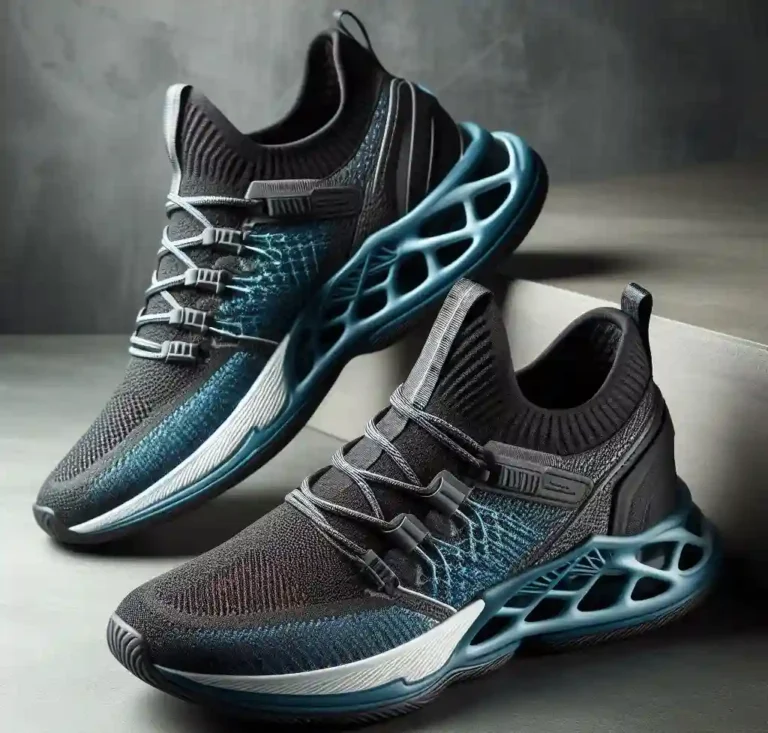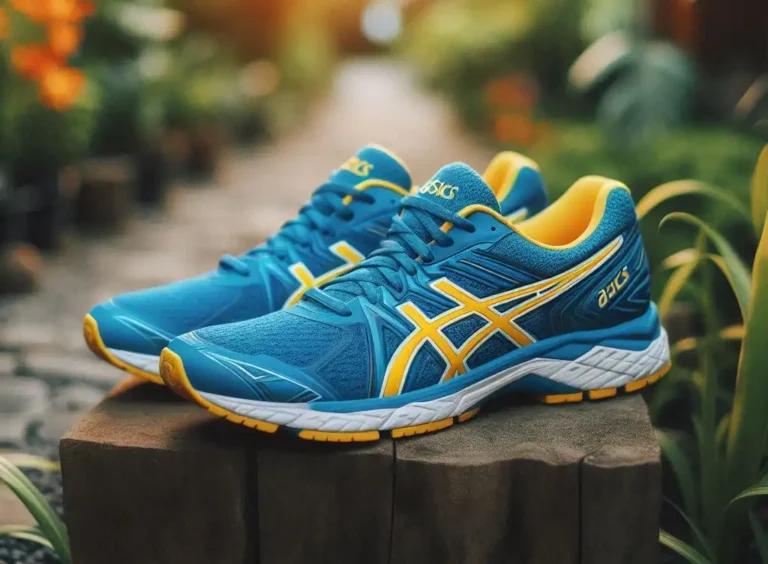Hoka Challenger 7 vs Clifton 9: Which is the Better Running Shoe?
Hoka Challenger 7 vs Clifton 9: Regarding max cushioning and comfort, Hoka One One is a brand that needs no introduction. With their innovative designs and generous helpings of midsole material, Hoka shoes have become a staple in the running community.
Two of their most popular models, the Challenger 7 and Clifton 9, have garnered a loyal following among runners of all levels. But with so many similarities, it can be tough to decide which is right for you.
In this head-to-head comparison, we’ll examine the features, specs, and real-world performance of the Hoka Challenger 7 and Clifton 9, helping you make an informed decision and find the perfect shoe for your running needs.
Hoka Challenger 7 vs Clifton 9: A Quick Overview

- Max cushioning: 5mm more midsole material than the Clifton 9 for an ultra-soft ride
- Smooth ride: Early stage Meta-Rocker design for a smooth, comfortable ride
- Durable: More substantial and durable outsole for high-mileage runners
- Supportive: Moderate support for runners with mild to moderate overpronation
- Weight: 10.6 oz (men’s), 9.2 oz (women’s)
Hoka Clifton 9:
- Lightweight: 0.5 oz lighter than the Challenger 7 for a more responsive feel
- Snappy ride: Later stage Meta-Rocker design for a more responsive, springy feel
- Breathable: More ventilated upper for a cooler, drier ride
- Neutral support: Suitable for runners with neutral foot pronation
- Weight: 10.1 oz (men’s), 8.7 oz (women’s)
Cushioning Showdown: Hoka Challenger 7 vs Clifton 9 Midsole Comparison

This comparison highlights the key differences in midsole cushioning between the Hoka Challenger 7 and Clifton 9, helping you decide which shoe is best for your running needs.
Midsole Cushioning Comparison
- Thicker midsole: 33mm heel, 29mm forefoot for a more cushioned ride
- More midsole material: 5mm more midsole material than the Clifton 9 for added comfort
- Softer midsole: CMEVA (Compression Molded EVA) midsole material for a softer, more cushioned feel
- Early stage Meta-Rocker: Designed for a smooth, comfortable ride with a more subtle transition
Hoka Clifton 9:
- Thinner midsole: 31mm heel, 27mm forefoot for a more responsive ride
- Less midsole material: 5mm less midsole material than the Challenger 7 for a more responsive feel
- Firmer midsole: PU (Polyurethane) midsole material for a more responsive, springy feel
- Later stage Meta-Rocker: Designed for a more responsive, snappy ride with a more pronounced transition
- The upper is constructed with durable and lightweight breathable engineered mesh and synthetic...
- Breathable textile lining for abrasion free wear
- The soft textile insole is engineered to offer exceptional cushioning and support
Key Takeaways
- The Challenger 7 has a thicker, softer midsole for a more cushioned ride, while the Clifton 9 has a thinner, firmer midsole for a more responsive feel.
- The Challenger 7 is better suited for runners prioritising comfort and cushioning, while the Clifton 9 is better suited for runners prioritising responsiveness and speed.
Weight and Responsiveness: How Do the Challenger 7 and Clifton 9 Stack Up?

Weight and Responsiveness Comparison
- Heavier weight: 10.6 oz (men’s), 9.2 oz (women’s) for a more substantial, cushioned ride
- More substantial midsole: Thicker midsole material contributes to a heavier weight
- Softer, more cushioned ride: Softer midsole material and thicker midsole contribute to a more cushioned ride
- Less responsive: Heavier weight and softer midsole material make the Challenger 7 less responsive
Hoka Clifton 9:
- Lighter weight: 10.1 oz (men’s), 8.7 oz (women’s) for a more responsive, snappy ride
- Lighter, more responsive midsole: Thinner midsole material and firmer PU material contribute to a lighter weight
- Firmer, more responsive ride: Firmer midsole material and thinner midsole contribute to a more responsive ride
- More responsive: Lighter weight and firmer midsole material make the Clifton 9 more responsive
Key Takeaways
- The Challenger 7 is heavier and less responsive due to its thicker, softer midsole, while the Clifton 9 is lighter and more responsive due to its thinner, firmer midsole.
- Runners who prioritize cushioning and comfort may prefer the Challenger 7, while runners who prioritize responsiveness and speed may prefer the Clifton 9.
Traction and Grip: Which Hoka Shoe Reigns Supreme on Various Terrains?

Traction and Grip Comparison
Hoka Challenger 7:
- More aggressive outsole: Deeper grooves and lugs for better traction on various terrains
- Better grip on trails: More aggressive outsole and larger surface area provide better grip on trails and uneven terrain
- Improved durability: More substantial outsole material and design provide improved durability and resistance to wear
- Better in wet conditions: More aggressive outsole and deeper grooves help to channel water and improve grip in wet conditions
Hoka Clifton 9:
- Less aggressive outsole: Shallower grooves and smaller lugs for a more responsive ride on roads and smooth trails
- Better on roads and smooth trails: Less aggressive outsole and smaller surface area provide a more responsive ride on roads and smooth trails
- Less durable: Less substantial outsole material and design make the Clifton 9 less durable and more prone to wear
- Not ideal in wet conditions: Less aggressive outsole and shallower grooves make the Clifton 9 less effective in wet conditions
Key Takeaways
- The Challenger 7 has a more aggressive outsole and better grip on trails and uneven terrain, making it a better choice for trail runners.
- The Clifton 9 has a less aggressive outsole and is better suited for roads and smooth trails, making it a better choice for road runners.
- Runners who prioritize traction and grip on various terrains may prefer the Challenger 7, while runners who prioritize a responsive ride on roads and smooth trails may prefer the Clifton 9.
Upper Construction and Fit: A Detailed Comparison of the Challenger 7 and Clifton 9

Upper Construction Comparison
Hoka Challenger 7:
- More substantial upper material: Thicker, more durable material for added support and structure
- More supportive upper: Additional overlays and stitching provide added support and stability
- Breathability: Moderate breathability through perforations and mesh panels
- Comfortable, secure fit: Soft, comfortable interior and secure heel counter provide a comfortable, secure fit
Hoka Clifton 9:
- Lighter, more breathable upper material: Thinner, more breathable material for a lighter, more ventilated ride
- Less supportive upper: Fewer overlays and less stitching provide a more minimalist, lightweight upper
- Excellent breathability: More extensive perforations and mesh panels provide excellent ventilation and cooling
- Snug, comfortable fit: Soft, comfortable interior and secure heel counter provide a snug, comfortable fit
Fit Comparison
Hoka Challenger 7:
- More spacious toe box: Roomier toe box provides a comfortable fit for runners with wider feet
- Secure heel fit: Secure heel counter and comfortable collar provide a comfortable, secure fit
- Supportive midfoot: Additional overlays and stitching provide added support and stability in the midfoot
Hoka Clifton 9:
- Snugger toe box: Narrower toe box provides a snug, comfortable fit for runners with narrower feet
- Comfortable heel fit: Soft, comfortable collar and heel counter provide a comfortable fit
- Less supportive midfoot: Fewer overlays and less stitching provide a more minimalist, lightweight midfoot
Key Takeaways
- The Challenger 7 has a more substantial, supportive upper with a more spacious toe box, making it a better choice for runners with wider feet.
- The Clifton 9 has a lighter, more breathable upper with a snugger toe box, making it a better choice for runners with narrower feet.
- Runners who prioritize support and stability may prefer the Challenger 7, while runners who prioritize a lightweight, breathable ride may prefer the Clifton 9.
Support and Stability: How Do the Challenger 7 and Clifton 9 Cater to Different Runners?
Support and Stability Comparison
Hoka Challenger 7:
- Moderate support: Suitable for runners with mild to moderate overpronation or flat feet
- Supportive midfoot: Additional overlays and stitching provide added support and stability in the midfoot
- Stable ride: Thicker midsole and more substantial upper provide a stable, comfortable ride
- Good for high-mileage runners: Supportive features and comfortable ride make it suitable for high-mileage runners
Hoka Clifton 9:
- Neutral support: Suitable for runners with neutral foot pronation or mild underpronation
- Less supportive midfoot: Fewer overlays and less stitching provide a more minimalist, lightweight midfoot
- Responsive ride: Thinner midsole and lighter upper provide a more responsive, snappy ride
- Good for runners with efficient form: Neutral support and responsive ride make it suitable for runners with efficient form and good biomechanics
Key Takeaways
- The Challenger 7 provides moderate support and stability, making it suitable for runners with mild to moderate overpronation or flat feet.
- The Clifton 9 provides neutral support and a responsive ride, making it suitable for runners with neutral foot pronation or mild underpronation.
- Runners who prioritize support and stability may prefer the Challenger 7, while runners who prioritize a responsive ride and efficient form may prefer the Clifton 9.
Breathability and Ventilation: Which Shoe Keeps Your Feet Cooler and Drier?
Breathability and Ventilation Comparison
Hoka Challenger 7:
- Moderate breathability: Perforations and mesh panels provide moderate ventilation and airflow
- Breathable upper material: Upper material is breathable, but not as lightweight and airy as the Clifton 9
- Comfortable, but not extremely ventilated: Provides a comfortable fit, but may not be the best choice for extremely hot or humid conditions
Hoka Clifton 9:
- Excellent breathability: Extensive perforations and mesh panels provide excellent ventilation and airflow
- Lightweight, airy upper material: Upper material is extremely lightweight and airy, providing excellent breathability
- Ideal for hot and humid conditions: Provides excellent ventilation and cooling, making it ideal for hot and humid conditions
Key Takeaways
- The Clifton 9 has better breathability and ventilation than the Challenger 7, making it a better choice for hot and humid conditions.
- The Challenger 7 has moderate breathability, but may not be the best choice for extremely hot or humid conditions.
- Runners who prioritize breathability and ventilation may prefer the Clifton 9, while runners who prioritize support and stability may prefer the Challenger 7.
Drop and Offset: Understanding the Ride and Feel of the Challenger 7 and Clifton 9
Drop and Offset Comparison
Hoka Challenger 7:
- 5mm heel-to-toe drop: Provides a more substantial heel-to-toe offset, which can help with stability and support
- More substantial offset: The Challenger 7 has a more substantial offset, which can help with stability and support, especially for runners with mild to moderate overpronation
- Softer, more cushioned ride: The Challenger 7 has a softer, more cushioned ride, which can help with comfort and shock absorption
Hoka Clifton 9:
- 4mm heel-to-toe drop: Provides a more moderate heel-to-toe offset, which can help with a more natural stride and toe-off
- Less substantial offset: The Clifton 9 has a less substantial offset, which can help with a more natural stride and toe-off, especially for runners with neutral foot pronation
- Firmer, more responsive ride: The Clifton 9 has a firmer, more responsive ride, which can help with propulsion and forward momentum
Key Takeaways
- The Challenger 7 has a more substantial heel-to-toe drop and offset, which can help with stability and support, especially for runners with mild to moderate overpronation.
- The Clifton 9 has a more moderate heel-to-toe drop and offset, which can help with a more natural stride and toe-off, especially for runners with neutral foot pronation.
- Runners who prioritize stability and support may prefer the Challenger 7, while runners who prioritize a more natural stride and toe-off may prefer the Clifton 9.
Value for Money: Is the Challenger 7 or Clifton 9 the Better Investment for Runners?
Value for Money Comparison
Hoka Challenger 7:
- Higher price point: The Challenger 7 is generally priced higher than the Clifton 9
- More substantial features: The Challenger 7 has more substantial features, such as a more substantial midsole and upper material, which can justify the higher price point
- Better for high-mileage runners: The Challenger 7 is a better value for high-mileage runners who need a shoe that can handle high mileage and provide adequate support and cushioning
- Worth the investment for some runners: For runners who need a shoe that can handle high mileage and provide adequate support and cushioning, the Challenger 7 may be worth the investment
Hoka Clifton 9:
- Lower price point: The Clifton 9 is generally priced lower than the Challenger 7
- Fewer features: The Clifton 9 has fewer features, such as a less substantial midsole and upper material, which can make it a more affordable option
- Better for casual runners: The Clifton 9 is a better value for casual runners who don’t need a shoe with as many features and can get by with a more minimalist design
- Good value for the price: The Clifton 9 is a good value for the price, especially for runners who don’t need a shoe with as many features
Key Takeaways
- The Challenger 7 is a better value for high-mileage runners who need a shoe that can handle high mileage and provide adequate support and cushioning.
- The Clifton 9 is a better value for casual runners who don’t need a shoe with as many features and can get by with a more minimalist design.
- Runners who prioritize features and support may prefer the Challenger 7, while runners who prioritize affordability and a minimalist design may prefer the Clifton 9.
FAQs
Q: What is the main difference between the Hoka Challenger 7 and Clifton 9?
A: The main difference is that the Challenger 7 has a more substantial midsole and upper material, making it a better choice for high-mileage runners who need more support and cushioning. The Clifton 9 has a less substantial midsole and upper material, making it a better choice for casual runners who prioritize a more minimalist design.
Q: Which shoe is better for trail running?
A: The Challenger 7 is a better choice for trail running due to its more aggressive outsole and better traction.
Q: Which shoe is better for road running?
A: The Clifton 9 is a better choice for road running due to its lighter weight and more responsive ride.
Q: How do the shoes compare in terms of breathability?
A: The Clifton 9 has better breathability than the Challenger 7 due to its more extensive perforations and mesh panels.
Q: Which shoe is better for runners with flat feet or overpronation?
A: The Challenger 7 is a better choice for runners with flat feet or overpronation due to its more substantial midsole and upper material, which provide better support and stability.
Q: Which shoe is better for runners with neutral foot pronation?
A: The Clifton 9 is a better choice for runners with neutral foot pronation due to its more moderate midsole and upper material, which provide a more natural stride and toe-off.

Mia Smith is the founder of Shoe Storyteller, a blog that celebrates the art and stories behind shoes. With a passion for fashion and a flair for storytelling, Mia brings a unique perspective to the world of footwear.




